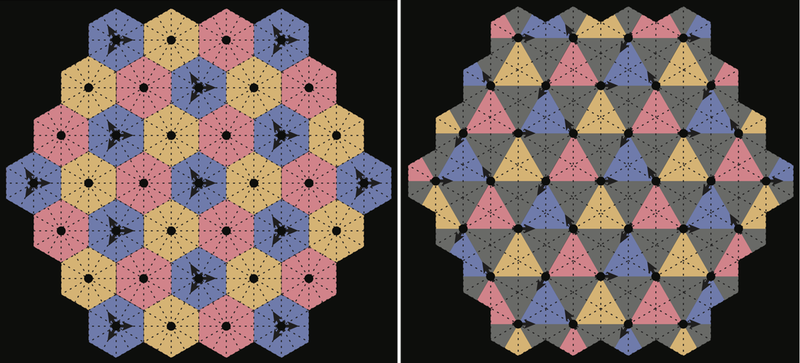
Crystals are normally defined by their orderly arrangement, one that does not involve any moving parts, but that might change as a new class of crystal has been discovered that could ultimately lead to the discovery of real world crystals that exhibit the behavior that has now been theorized. The theory behind the new crystal arrangement came first from Boyle the team notes, he was studying the LISA Pathfinder project where three satellites have been launched to orbit the sun as a means for detecting gravitational waves. He wondered if adding a fourth satellite might not make more sense as it would allow for gathering more statistical informational about gravity waves if they were actually detected, e.g. their amplitude, polarization and direction. But as he thought about how the satellites would orbit, he found paths for all four that followed a highly dynamic symmetry—and that were a cousin to the tetrahedron. Later he discussed what he had found with his colleagues who devised a means for describing all possible symmetric orbits, which they called a swarm—where choreography was used as a measure of symmetry. The result the combined team claims, is a new type of structure they call choreographic crystals.
The trio readily acknowledges that they have no idea if such crystals actually exist in the real world but suggest it might be possible that they are in atomic nuclei or in electrons in solids—finding them would be a challenge, however, because they would have to be seen in action, a single snapshot would not convey the motion required to see the symmetry. They also suggest that their new crystal structure could lead to some new math as was the case when static crystal structure math led to applications in number theory and even error correction in computer applications.
Latham Boyle et al. Symmetric Satellite Swarms and Choreographic Crystals, Physical Review Letters (2016). DOI: 10.1103/PhysRevLett.116.015503 . On Arxiv: http://arxiv.org/abs/1407.5876
Abstract
In this Letter, we introduce a natural dynamical analogue of crystalline order, which we call choreographic order. In an ordinary (static) crystal, a high degree of symmetry may be achieved through a careful arrangement of the fundamental repeated elements. In the dynamical analogue, a high degree of symmetry may be achieved by having the fundamental elements perform a carefully choreographed dance. For starters, we show how to construct and classify all symmetric satellite constellations. Then we explain how to generalize these ideas to construct and classify choreographic crystals more broadly. We introduce a quantity, called the "choreography" of a given configuration. We discuss the possibility that some (naturally occurring or artificial) many-body or condensed-matter systems may exhibit choreographic order, and suggest natural experimental signatures that could be used to identify and characterize such systems.



a temporal template for liquid crystals...
just as the periodic table of elements represents the "shape of time" as bound light (atomic electron configuration) engenders time (noether's theorem)...